Are you starting your positive parenting journey? Here are some of the best parenting books that have changed my parenting perspectives. I will be sharing books about child development, positive parenting, toddlerhood, encouraging children to read, and developing resilience in children etc.
Table of contents :
- If you only time for 1 book…
- If you want to understand the essence of positive parenting…
- If you are a new parent…
- If you want to learn about secure attachment
- If you want to develop resilience in your child…
- If you enjoy reading about how children’s brains are wired…
- If you want to raise unselfish kids…
- If you have a toddler…
- If you want to manage screen time…
- If you want to read your child’s minds…
- If you want to manage siblings rivalry…
- If you want to speak your child’s love language…
- If you want to manage your triggers and break generation cycles…
- If you are a parent of boys…
If you only time for 1 book…
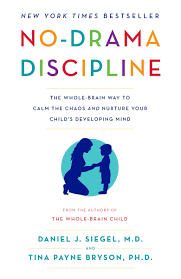 No Drama Discipline by Daniel. J. Siegel and Tina Payne Bryson
No Drama Discipline by Daniel. J. Siegel and Tina Payne Bryson
This book changed my life. No Drama Discipline by Daniel J. Siegel and Tina Payne Bryson is the book I read when I was at my lowest of my parenting, and it has really changed my perspective about discipline.
I’ve learnt that the goal of discipline is not about controlling. Dr. Daniel Siegel and Dr. Tina Payne Bryson shared the two goals of parenting: the short term goal is to gain immediate cooperation and the long term goal, which is more important, is to develop skills in our chile so they can handle challenging situations (e.g. when they don’t get to watch more tv) and resiliently work through the difficult emotions that make them feel out of control.
For me as a parent and educator, I’ve seen how important it is for children to develop self-control and a moral compass to make good decisions, even when the adults are not around.
We often want to stop our children’s inappropriate behaviors, but did you know that their behaviors are forms of communication? Dr. Daniel Siegel and Dr. Tina Payne Bryson shared the brain science behind children’s behaviors in a succinct and effective manner. I particularly like to read about the research backed principles of connection, and practical tips on how to validate your children’s emotions (e.g. stop talking and listen, reflect what you hear etc) The book includes simple comics to help readers better understand how to apply the strategies.
One key takeaway is to always pay attention to our children’s emotions whenever they exhibit tricky behaviors. I have learnt to connect with my children calmly and not to be too eager to teach.
You can pick up actionable tips to create a no-drama household by using redirection strategies to nurture your children’s developing minds. From the book, I learnt several tools to teach my kids insight, empathy and repair – what is known as “mindsight” to help them integrate their brains and improve relationships with others.
This is the #1 parenting book that I recommend to all parents.
If you want to understand the essence of positive parenting…
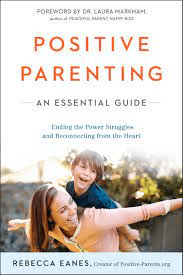 Positive Parenting by Rebecca Eanes
Positive Parenting by Rebecca Eanes
The concept of positive parenting can be overwhelming and it is so easy to blame yourself for the things that you feel like you are not doing right. Rebecca Eanes’ book provides easy and applicable changes that you will soon find yourself saying and doing almost naturally. It challenges us all to take a look at our past and the way that we were brought up, to how we currently parent and the correlation between the two. The goal of her book is to encourage a healthy, connected family unit through intention, better communication and conversation.
This book reminds all of us that change has to start with ourselves. Rebecca provides tips on how to change our thought patterns and to practice positive thinking. As Rebecca says in her book, “Work on stopping your negative thought mid-thought every single time and thinking the corrective thought instead. The more you repeat the corrective thought, the more that neural pathway gets reinforced, and eventually the corrective thought will be your automatic thought.” This book also encourages you to take your eyes off the problems and to look for solutions. It will help you to see that your children are more than just their behavior. When children misbehave, it is because something is wrong—they are signaling to you that they are struggling with something and they need help.
If you are a new parent…
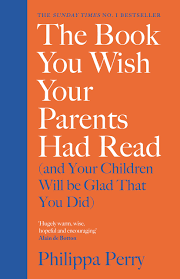 The book you wish your parents had read by Philippa Perry
The book you wish your parents had read by Philippa Perry
This is one book I wished I had read when I was pregnant with my children. The book gets you thinking about the type of parents you want to be, general tips on how to keep up with positive mental health (being flexible, staying away from your phones, understanding your clingy child), how to manage your children’s emotions and tips to navigate parenting challenges (tantrums, back talk, communicating with teenagers and young adults) etc.
One of the six chapters guides you through your pregnancy journey: from the time you conceive to the time you become hormonal and lonely. There is also a focus on attachment theory, which I am a huge advocate of.
I gained several sensible and insightful advice from Philippa:
- A safe and authentic parent-child relationship can transcend all parenting challenges
- The time and attention invested in your children when they are young, will shape who they will become in the future
- The more you guide and help them solve problems now, the better they will become at navigating life in the future
If you want to learn about secure attachment…
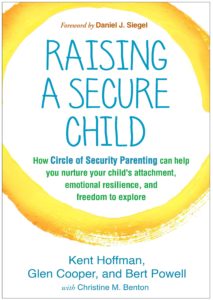 Raising a Secure Child: How Circle of Security Parenting Can Help You Nurture Your Child’s Attachment, Emotional Resilience, and Freedom to Explore by Kent Hoffman, Glen Cooper, Bert Powell
Raising a Secure Child: How Circle of Security Parenting Can Help You Nurture Your Child’s Attachment, Emotional Resilience, and Freedom to Explore by Kent Hoffman, Glen Cooper, Bert Powell
The concept of positive parenting can be overwhelming and it is so easy to blame yourself for the things that you feel like you are not doing right. Rebecca Eanes’ book provides easy and applicable changes that you will soon find yourself saying and doing almost naturally. It challenges us all to take a look at our past and the way that we were brought up, to how we currently parent and the correlation between the two. The goal of her book is to encourage a healthy, connected family unit through intention, better communication and conversation.
This book reminds all of us that change has to start with ourselves. Rebecca provides tips on how to change our thought patterns and to practice positive thinking. As Rebecca says in her book, “Work on stopping your negative thought mid-thought every single time and thinking the corrective thought instead. The more you repeat the corrective thought, the more that neural pathway gets reinforced, and eventually the corrective thought will be your automatic thought.” This book also encourages you to take your eyes off the problems and to look for solutions. It will help you to see that your children are more than just their behavior. When children misbehave, it is because something is wrong—they are signaling to you that they are struggling with something and they need help.
Imagine taking your four-year-old child to a playground: he might leave your side to play in the sandpit, which is the move toward exploring, but after a few minutes he may look in your direction and start to feel the need for affirmation or delight. He might be thinking, ‘Mummy, look at his sandcastle that I have just built? Didn’t I do such a good job?” He might also be turning to you to get you to explore with him (“enjoy with me!”).
Imagine this other scenario. Your child is starting his first day at school. This is a nerve-wracking situation for many children because they will have to separate from their parents. For the child to feel safe to go about exploring in class, you may need to come into the class and act as the secure base until they feel comfortable and secure enough to explore. Once she feels safe enough to start playing with the other children, she will still continue to look back at you for reassurance or affirmation. Occasionally, she might even run over to you for a reassuring hug before going off to play again.
From this book, I have learnt to be present for my child, to identify the different points he is at on the Circle of Security and to meet his needs in the way that he requires it best at a particular moment in time. This book will also offer tips on cultivating a sense of security as a base for your child to be independent and to feel safe to explore his environment.
If you want to develop resilience in your child…
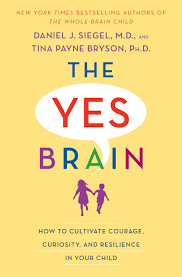 The Yes Brain: How to Cultivate Courage, Curiosity, and Resilience in Your Child by Daniel J. Siegel
The Yes Brain: How to Cultivate Courage, Curiosity, and Resilience in Your Child by Daniel J. Siegel
When faced with challenges, tasks that are not preferred, and other situations such as homework time, screen time, food choices, and bedtime, children often go into power struggles with us or they might end up shutting down, responding with reactivity instead of receptivity. This is what the authors Daniel J. Siegel and Tina Payne Bryson call a ‘No Brain’ response. However, take heart that our children can be taught to approach life with openness and curiosity. Parents can encourage their children to be open to their environments and the different situations in day to day life, even during difficult times. This is what it means to cultivate a ‘Yes Brain’.
This book is truly a game changer! It puts together a ton of research about brain development, children’s behavior, mindfulness, play, parenting and more and translates it into actionable steps that parents can take to foster the skills children need to develop in order to succeed in today’s world.
A ‘Yes Brain’ is a child’s ability to create a mental state of flexibility, curiosity, imagination and freedom from paralyzing worry. Dan Siegel and Payne Bryson break down the four fundamentals of a Yes Brain as: Balance, Resilience, Insight and Empathy. They provide clear and concise tips as well as images and a downloadable pdf to help parents understand how their daily language and interactions can help develop new neural pathways for children, creating long term capabilities for confidence, curiosity and creativity.
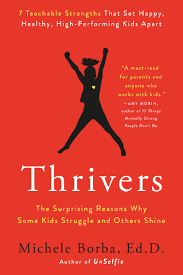 Thrivers by Michele Borba
Thrivers by Michele Borba
This book explores the perspective of a child born in today’s fast-paced, digital era and how the average child is being educated towards higher-than-usual achievements, being mature, responsible and successful, instead of being happy and focused on their own definition of success.
This means that children born in this era are more driven and clever than their parents. However, statistics have shown that these children are more likely to have depression, anxiety, and suicidal thoughts. Nowadays, high performance is a standard that adults teach them to achieve at every cost, including at the cost of their happiness.
Michele Borba shed light on the difference between children who struggle and children who succeed: and it is not about grades or test scores, but the seven character traits that set Thrivers apart.
Children with these seven character traits are more likely to achieve happines and greater accomplishments later in life. The seven character traits are self-confidence, empathy, self-control, integrity, curiosity, perseverance and optimism.
Other than sharing scientific studies, Borba also provided many actionable strategies that parents can apply to their children. For example, teaching kids how to develop self-control through games like Freeze, or singing a song, or setting a timer.
She also provided scripts to help parents to teach their children empathy, for e.g. suggested scripts like “Think how the other person would feel if roles were reversed.” or “Let’s tell the story from the three bears’ view. What would they say?”
There are also age-by-age ideas to help kids from toddlers, all the way to tweens and older.
This is one book I’ll reach for to try out the various strategies to help my kids learn good values and positive qualities.
If you enjoy reading about how children’s brains are wired…
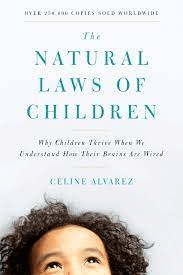 The Natural Laws of Children: why children thrive when we understand how their brains are wired by Céline Alvarez
The Natural Laws of Children: why children thrive when we understand how their brains are wired by Céline Alvarez
In this book, Céline Alvarez shares how a child’s brain establishes an astonishing number of neural connections each day. That’s about 700 to 1000 new connections every second. The least-used connections progressively weaken and are eliminated. However, the most regularly recurring experiences of the child are reinforced. Another interesting fact is this: the child’s brain pays no attention to the quality of what it gets rid of or what it keeps. It simply reinforces the most frequent experiences. I could be taking one day a week to bring my child to the playground and enjoy some time together, however, on the rest of the six days, I am stressed out from work and short-fused. My child’s brain is going to go with the experience that he gets the most frequently. This has definitely made me rethink the way that I want to create experiences for my child. How do I want to talk and behave around my child to best shape his experiences?
The author, Céline, also shared about her preschool experience in the book. She was determined to test out the effectiveness of a scientific approach to education, which in other words, is an approach based on the natural laws of child development. Therefore, in a school in a disadvantaged neighbourhood in Paris, Céline Alvarez began teaching children the way she thought best. In Céline’s classroom, a great emphasis was placed on:
- Communal activities
- Social bonding
- The presentation of activities (interactive, open-ended and placed in a manner to encourage choice-making rather than being rigid)
The results of this approach were hugely positive. Children displayed:
- Increased levels of concentration in class
- More harmonious interactions with others
- Better self-discipline
Through this book, I have gained a better understanding of the science behind a children’s brain, and because of that, I am more aware of the way I respond to my child and the way that I bring across my message. I have also picked up some tips along the way on how to create lasting and positive experiences for them.
If you want to raise unselfish kids…
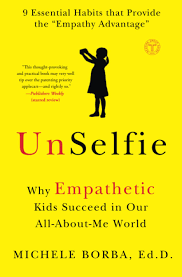 UnSelfie: Why Empathetic Kids Succeed in Our All-About-Me World by Michele Borba
UnSelfie: Why Empathetic Kids Succeed in Our All-About-Me World by Michele Borba
Empathy is an important core value to me, and I want my kids to be able to put themselves in the shoes of others. Note that the part of the brain responsible for empathy is the cerebral cortex, specifically the anterior insular cortex, which only starts developing from 3 years of age. This means we have to be more empathetic to our children who are just starting to learn empathy!
In this book by one of my favorite authors Michele Borba, I learn how to guide my children step by step by first developing empathy, practising empathy and finally, living empathy. I like the sections “What Science says” and the “age-by age” practical strategies that I can apply instantly.
One strategy that I’ve been implementing is to teach my kids how to disagree respectfully. Some suggested scripts I learnt from the book “You don’t have to agree… Let’s hear your idea now… This is another way to look at it… When my kids argue, I’ll make sure to have them share their own thoughts, and listen to others. We practise this each time there is a disagreement, the kids then get sufficient practise to learn how to think from someone else’s point of view.
If you have a toddler…
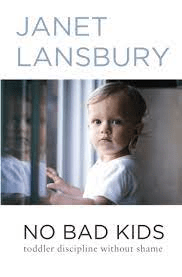 No Bad Kids: Toddler discipline without shame by Janet Lansbury
No Bad Kids: Toddler discipline without shame by Janet Lansbury
Janet Lansbury covers almost every aspect of parenting a toddler! The book is an easy read filled with several examples and tips. Lansbury is mentored by child specialist Magda Gerber who founded RIE (Resources for Infant Educarers).
The core of RIE Parenting is “ babies are whole people – sentient, aware, intuitive, and communicative. They are natural learners, explorers, and scientists. Babies can test hypotheses, solve problems, and understand language and abstract ideas.”
After reading this book, you will understand why children are worthy of respect, and learn about the development of toddlers. Toddlers are meant to test boundaries, but you can still set firm limits to guide and teach them.
Lansbury also shared that consequences are “euphemism for punishments” and what you can do instead. If you are having a hard time understanding and communicating with your toddler, read this book!
If you want to manage screen time…
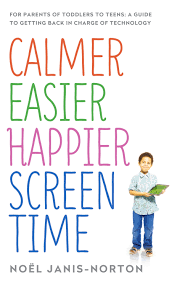 Calmer easier happier screen time by Noel Janis-Norton
Calmer easier happier screen time by Noel Janis-Norton
Noël Janis-Norton, the author of Calmer, Easier, Happier screen time, is a learning and behaviour specialist with over 45 years of experience in Britain and the United States as a head teacher, special needs advisor, consultant, lecturer and parenting coach. In this book, she coaches parents on how to improve family life and guides teachers to bring out the best in their pupils. Noel focuses on more than just the screen time issues modern-day parents face. Instead, Noel dives deep into the broader parenting techniques that affect screen-time issues too. As you begin to read this book, you will discover an in-depth look at how children view screen time, which will in turn give you a clearer understanding of how to deal with screen time issues once and for all.
Here are some tips from Noel that I really enjoy:
- Be in charge and stay true to your values. Remember that children are very vocal about what they want, but you as the parent, will definitely know better. Even though you may not be the perfect parent, you have the experience, maturity, common sense and wisdom that might not be completely developed in children and teens. Therefore, do not be afraid to be firm when it comes to boundaries and rules about screen time.
- Be proactive. Focus on prevention and motivation, rather than reacting after the problem has occured.
- Parents need to be united so that both can agree to uphold the family rules and routines. Both of you need to agree and communicate the same message to your child regarding screen time.
- Lastly, lead by example. Children and teens are influenced by what we do much more than by what we say.
If you want to read your child’s minds…
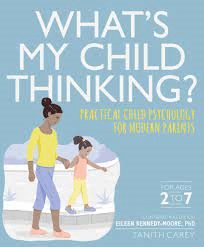 What’s my Child Thinking? By Eileen Kennedy Moore and Tanith Carey
What’s my Child Thinking? By Eileen Kennedy Moore and Tanith Carey
This is a great book to help understand children and the ways that they think. The authors provide hundreds of examples of scenarios that are totally relatable and applicable in our day-to-day lives. In the beginning of the book, it provides thorough and concise information on how children’s brains develop and milestones that they achieve under four categories, thinking, relating, feeling and doing.
The main part of the book is split into three sections, 2-3 years, 4-5 years and 6-7 years. This makes it very easy to search for what is relevant for you and your child. With the contents and the ‘see related topic’ on each page, it makes the book very easy to navigate and a great way to search for something if you are in a hurry or if you are looking for something very specific. The way that the pages are laid out makes the book easy to understand. It has speech bubbles to show what the child said and what you’re both thinking on each page along with how to respond at that specific moment and in the long term. These short paragraphs on each section are straight to the point and they help you to take your child’s perspective.
If you want to manage sibling rivalry…
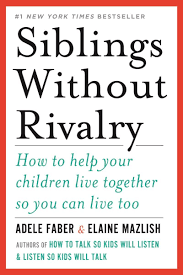 Siblings without rivalry by Adele Faber and Elaine Mazlish
Siblings without rivalry by Adele Faber and Elaine Mazlish
This book is written in a narrative style which makes it easy to follow because the authors combine their separate experiences into one voice as well as share their personal examples as represented by two sibling boys. They also provide data from many parent groups that were consolidated into a sample 8 week session. Each chapter represents a specific topic and what was discussed when the parent group met. At the end of each, the authors provide illustrated examples of what we tend to say and what we can say instead, a quick reminder bullet point summary, questions asked by parents with suggested answers, not forgetting success stories from parents who tried things from the previous week.
I especially loved what the authors said so beautifully about their own now-grown children- “my three have built bridges to span the separate islands of their identities. So that if they ever need to reach each other, they have many ways of getting there.” What a beautiful analogy!
Siblings Without Rivalry suggests for parents to step in when needed, but to empower and encourage their kids, so they can step back out as soon as possible. We know that our children need certain skills and much practice to read, do math, play a sport or learn an instrument. Similarly, the authors share that “The family is where we learn our relationship skills. And the way we relate to our children and teach them to relate to each other, even in the heat of battle, can be our permanent gift to them.”
Three ideas I took away from the book:
- Create simple signs and drawings to show our feelings or a family rule we are struggling with and put it in the place where we most need the reminder.
- Ask family members to be ready to give others a clue as to their mood using agreed upon colors as “code” and a way to know better how to respond to each other.
- Plan for one on one time with each of my children to talk about how they are feeling about each of their siblings. Give them a chance to share without judgment.
If you want to speak your child’s love language…
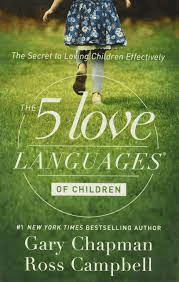 The 5 love languages of children by Gary Chapman
The 5 love languages of children by Gary Chapman
The 5 love languages were developed by marriage counselor Gary Chapman, describing in detail how people like to give and receive love in different ways. In his theory, Chapman described five unique languages for expressing love. They are words of affirmation, acts of service, receiving gifts, quality time and physical touch.
For example, words of affirmation are powerful in communicating love. Words of affection and endearment, words of praise and encouragement, words that provide guidance all communicate one thing to a child- “I love you and I care about you”. These words will boost a child’s self-esteem and cultivate his inner sense of worth and security. For a child whose primary love language is words of affirmation, try to stay away from using harsh critical words as they might have a deeper, longer lasting impact on him.
This book explains how to identify your child’s primary love language and provides numerous examples of how to speak it through various actions targeting specific age groups.
If you want to manage your triggers and break generation cycles…
 The conscious parent by Dr. Shefali
The conscious parent by Dr. Shefali
Endorsed by Oprah as “one of the most profound books on parenting she has ever read,” this book written by Dr. Shefali Tsabary is not a how-to guide on raising good children, neither is it a step-by-step manual to overcoming the common challenges of parenthood. Instead, it is a book which tries to redefine traditional parenting by highlighting how parents can “capitalize on the emotional and spiritual lessons inherent in the parenting process” so that they can use them for their own development which, in turn, will hopefully help them to parent more effectively.
While most parenting books aim to help parents regain control over their children, “The Conscious Parent” aims to help parents control themselves. This book combines Western psychology and Eastern philosophy to offer great ideas on parenting as well as to open up your mind about parenting styles. The core question asked and answered by The Conscious Parent is this: How can you expect to raise children with a higher state of consciousness and empowerment if you are not a conscious and self-aware parent?
One key value that comes up often in this book is how children are unique human beings who can be completely different from their parents. According to Dr. Shefali, “When you parent, it’s crucial you realize you aren’t raising a “mini-me”, but a spirit throbbing with its own signature. For this reason, it’s important to separate who you are from who each of your children is. Children aren’t ours to possess or own in any way. When we know this in the depths of our soul, we tailor our raising of them to their needs, rather than molding them to fit our needs.”
If you are a parent of boys…
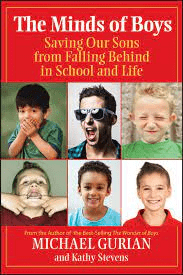 The minds of boys by Michael Gurian
The minds of boys by Michael Gurian
This book provides practical handles to parents and educators on how to help boys overcome their current classroom challenges by helping to create the proper learning environment, understanding how to help boys work with their unique natural gifts, nurture and expand every bit of their potential, and enabling them to succeed in life the way they ought to. Some applicable tips offered in this book include giving your son a squeeze toy to fidget with during learning, allowing him to walk around while talking or brainstorming (ever notice how your son can’t sit down?,) limiting screen time, and supporting him by reviewing homework and also calling on the help of your “village,” anyone in your family or community that can serve as a mentor to him.
One section of the book is dedicated to examining the functionality of the male brain and how it differs from the female brain in the processing of information. It also includes techniques that may be applied by parents to stimulate brain function in boys. This book will shed light on how you can support your son to feel competent in some area and help him to regain his confidence and motivation.

